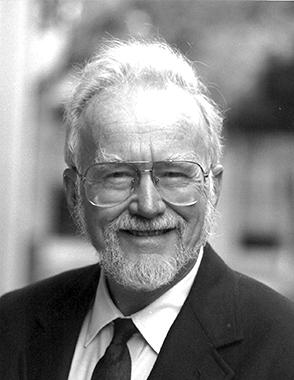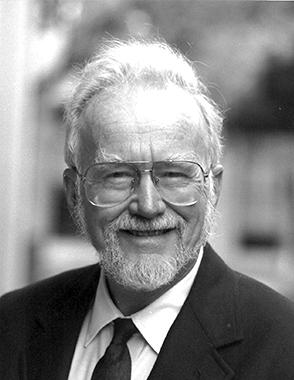Thomas Gale Moore, a longtime Hoover Institution fellow and a longtime friend, died on August 23 at age ninety-three. Tom was a first-rate economist who did much of the important early work that led to deregulation of trucking. I learned so much from that work. Just as important, I learned from Tom, relatively early in my career, the range of things economists could do besides publishing in academic journals that, typically, few people read. Moreover, he did not always stick to narrowly economic issues. He implicitly applied cost/benefit analysis to the US government’s foreign wars.
Transportation deregulation
I first learned about Tom’s work on transportation regulation in December 1972, after my first three months of graduate school at UCLA. I had gone back to Canada for the Christmas holiday and stayed with a friend and fellow UCLA graduate student in Brantford, a city near Toronto. We found out that the American Economic Association meetings were being held in Toronto, so we went there and hung out. One of the exhibition booths was run by the American Enterprise Institute, a conservative think tank in Washington.
On the last day, people who run booths are typically eager to sell their wares at a steep discount or even give them away. I had noticed an AEI monograph, Freight Transportation Regulation: Surface Freight and the Interstate Commerce Commission, by Thomas Gale Moore. Its steep price, $3 in 1972 dollars (which would be over $22 in today’s dollars), would have been a deterrent but, if I recall correctly, the AEI staffer gave it to me.
I still have my copy. I’ve made markings and notes on almost every page. I learned a lot from it about how regulation of trucking and railroads limited competition, making shipping by truck and rail more expensive than otherwise. I highlighted many things. Two stand out.
One is on freight forwarders, which are “firms or individuals who combine small shipments into larger truckload or carload lots.” Tom pointed out that freight forwarders made things easier for railroads and shippers; railroads offered freight forwarders “facilities at their depots for little or no rent.” How did the Interstate Commerce Commission (ICC) view this? The regulators thought, correctly, that these special deals threatened the stability of the regulated rate structure, creating more competition between railroads. Tom wrote, “The reaction of the ICC was to wish that freight forwarders would disappear.”
The other highlight is on “gateway restrictions.” Let’s say that one trucker was allowed to ship particular items from A to B. Another trucker was allowed to ship from B to C. If the truckers merged, the new merged firm, to get items from A to C, had to go through B (B was the gateway). That led to circuitous routing, higher fuel costs, higher wage costs, and, therefore, higher prices.
Facts such as these, told by Tom Moore and others, sowed the seeds of trucking and rail deregulation. President Ford appointed some advocates of more competition to the ICC. President Carter, with Congress, carried deregulation over the finish line with the Motor Carrier Act of 1980, which reined in the ICC’s authority over trucking, and the Staggers Rail Act of 1980, which loosened regulation of railroads. President Reagan and Congress continued with further deregulation and President Clinton, with Congress, abolished the ICC.
Tom’s work on transportation regulation led me to commission a piece by him, “Trucking Deregulation,” for my Fortune Encyclopedia of Economics, which later became The Concise Encyclopedia of Economics. Then, when I put together the second edition of the Concise Encyclopedia, I commissioned him to write a piece titled “Surface Freight Transportation Deregulation.” In both articles, Tom lays out the problems with regulation and lays out the successes of deregulation. In his later article, for example, he points out that from 1977, when deregulation began, to 1982, “rates for truckload-size shipments fell by about 25 percent” inflation-adjusted. Deregulation also, he notes, made it easier for nonunion workers to get jobs in the trucking industry, which had been heavily unionized. Virtually all of the data he presents show a transportation sector with huge elements of government-mandated monopoly turning into a highly competitive industry.
Tom Moore’s effect on my growth as an economist
When I started a PhD program, I quickly learned that the coin of the realm was academic articles in peer-reviewed journals. That appealed to me somewhat, but reading Tom Moore’s AEI monograph, which I had picked up only three months into my career, made me aware that economists could write for bigger audiences. I found that more exciting. Some of my professors at UCLA wrote popular monographs also. One that stands out is Same Peltzman’s AEI monograph on how regulation by the Food and Drug Administration was dramatically reducing the rate new drug development. But that was the exception.
Tom did something else that I learned of in my third year of graduate school: he became a political activist. Even at UCLA, where the prominent professors were strong and articulate advocates of economic freedom, activism was frowned on. Somehow, though, I got a copy of a statement that Tom had circulated at a 1974 meeting of economists called by newly inaugurated President Ford to discuss inflation. When people think of inflation, they typically think about particular prices, rather than the overall price level, rising. Notice today, for example, how discussions of inflation quickly turn to gasoline and grocery prices. So, Tom circulated a statement calling for deregulation of many sectors of the economy so that prices could fall: trucking, airlines, energy, and a number of others.
(I’m going by memory here. The copy he gave me was destroyed in my February 2007 office fire.) As I recall, he got the vast majority of economists, a group that included many Democrats as well as Republicans, to sign the statement.
I never forgot that. Over the years, I have signed many such statements and circulated a few. My most recent, earlier this year, was an amicus curae brief taking the side of Uber and Lyft in their successful attempt to limit California’s government restriction of their business model.
Tom Moore on global warming
Tom’s interests ranged widely. For the second edition of the Concise Encyclopedia, he wrote “Global Warming: A Balance Sheet.” That was almost twenty years ago. If you read it, you’ll see that his analysis is still spot on.
Here’s an excerpt:
The media and many others have attributed to global warming every possible weather, from more to less climate variability, from more rainfall to more drought, and from more violent winter storms to fewer and weaker cold weather surges. But an examination of its likely effects suggests little basis for that gloomy view. According to the IPCC, global warming would warm winters more than summers, would produce more precipitation, and would lead to more of an increase in temperatures at higher latitudes—that is, in already cold regions—than at the equator.
How would climate affect economies? Climate affects principally agriculture, forestry, and fishing. For the United States, these three total less than 2 percent of the GDP. Manufacturing, most service industries, and nearly all extractive industries are immune to direct impacts from climate shifts. Factories can be built practically anywhere—in northern Sweden or in Canada, in Texas, Central America, or Mexico. Banking, insurance, medical services, retailing, education, and a wide variety of other services can prosper as well in warm climates (with air-conditioning) as in cold (with central heating). A warmer climate will lower transportation costs: less snow and ice will torment truckers and automobile drivers; fewer winter storms will disrupt air travel; bad weather in the summer has fewer disruptive effects and passes quickly; a lower incidence of storms and less fog will make shipping less risky. Higher temperatures will leave mining and the extractive industries largely unaffected; oil drilling in the northern seas and mining in the mountains might even benefit.
A few services, such as tourism, may be more susceptible to weather. A warmer climate would likely change the nature and location of pleasure trips. Many ski resorts, for example, might face less reliably cold weather and shorter seasons. Warmer conditions might also mean that fewer northerners would feel the need to vacation in Florida or the Caribbean. At the same time, new tourist opportunities might develop in Alaska, northern Canada, and other locales at higher latitudes or upper elevations. Shorter winters would benefit most outdoor recreation, such as golf, hiking, tennis, and picnicking.
In many parts of the world, warmer weather should mean longer growing seasons. If the world were to warm, the hotter climate would enhance evaporation from the seas and, in all probability, lead to more precipitation worldwide. Moreover, the enrichment of the atmosphere with CO2 would fertilize plants, making for more vigorous growth. The IPCC assessment of warming is that “a few degrees of projected warming will lead to general increases in temperate crop yields, with some regional variation” (IPCC 2001, p. 32). Bjørn Lomborg, a Danish environmentalist and statistician, reported that with moderate adaptation by farmers, warming would boost cereal production in richer countries by 4–14 percent, while cutting them in poorer countries by 6–7 percent (2001, p. 288). The US Department of Agriculture, in a cautious report, reviewed the likely influence of global warming and concluded that the overall effect on world food production would be slightly positive and that, therefore, agricultural prices would probably decrease (Kane et al. 1991).
Global warming could melt glaciers and thus cause rising sea levels, which would flood low-lying regions, including a number of islands and delta areas. The high-end estimate by the IPCC of the rise in the sea level by the year 2100 is three feet. Economists such as William Cline, William Nordhaus, and Richard Morgenstern, starting with this three-foot assumption, have estimated the costs of building dikes and levees and of the loss of land for the United States at $7–$10.6 billion annually, or about 0.1 percent of America’s GDP. For some small low-lying island nations, the problems would be much more severe; in some cases they might even be completely submerged.
Not bad.
Tom Moore’s work on foreign policy
I mentioned above that Tom also went beyond narrow economic issues. That’s evident in several articles he wrote on Antiwar.com. Always a skeptic of government, Tom didn’t forget his skepticism when it came to the US government’s actions abroad. He even did a kind of cost/benefit analysis in his “The Iraq War: Is the United States Better Off?” (Antiwar.com, March 16, 2004). He argued that the Iraq war cost Americans in both lives and treasure without the benefit of making us any safer. Over the years, he wrote a number of other articles on that site. In all of them, he applied his analytic skills to make an implicit, and sometimes explicit, case for having the US government stay out of other countries’ affairs.
His pro-peace articles fit the man. Whenever I talked to him, I saw a peaceful, humane person who cared about others, and not just other Americans. I already miss him.

















